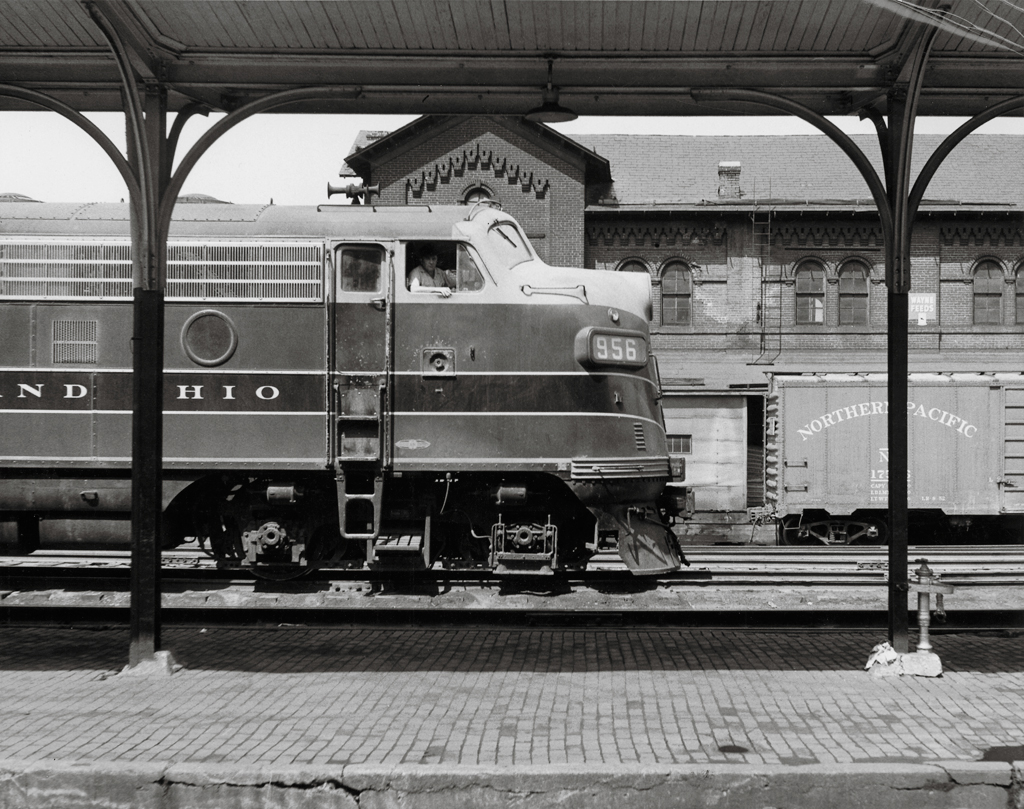
The lead F-unit of six pulling a westbound Baltimore & Ohio Time Saver train eases along in front of the Cumberland, Md., station on a July 1956 day. The train is bound for points west via Grafton, W.Va. Read more about Cumberland, the shop, and the B&O in the March 2012 issue of Trains. Photo […]
Read More…
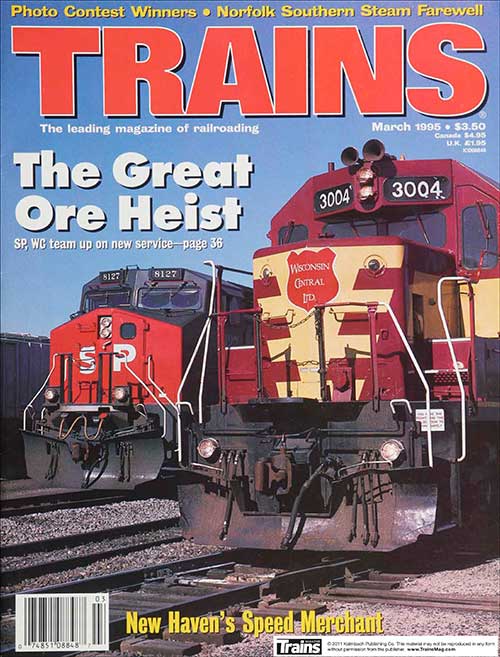
Iron ore is an important commodity that is best hauled by boat or by rail. TRAINS coverage of iron ore haulage spans more than 50 years. In this month’s Trains Express PDF package, you’ll learn about the classic Minnesota mover, go inside steel mill railroads, and see the locations of steel mills, mini-mills, pellet plants, […]
Read More…
FULL SCREEN Trains Magazine Collection Skiers disembark Boston & Maine’s Snow Train at North Conway, N.H. FULL SCREEN Trains Magazine collection Passengers enjoy their ride aboard the Boston & Maine Snow Train. FULL SCREEN John Gruber collection The front cover of Boston & Maine’s 36-page booklet advertising its 1940 season. FULL SCREEN John Gruber collection […]
Read More…
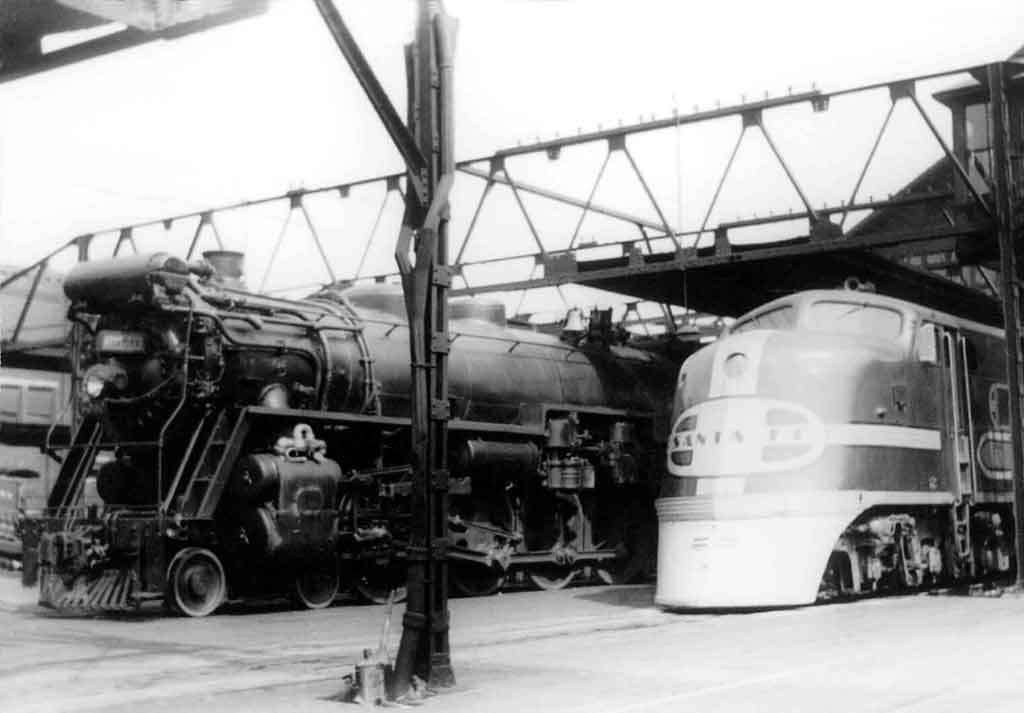
Grand Trunk Western 4-8-2 No. 6040 on the Maple Leaf stands beside Santa Fe E1 diesel No. 2 on the Kansas Cityan at Chicago’s Dearborn Station. Frank M. Rogers I think I was a railfan by the time I was 5 years old. My father had been a fireman on the Milwaukee Road since he […]
Read More…
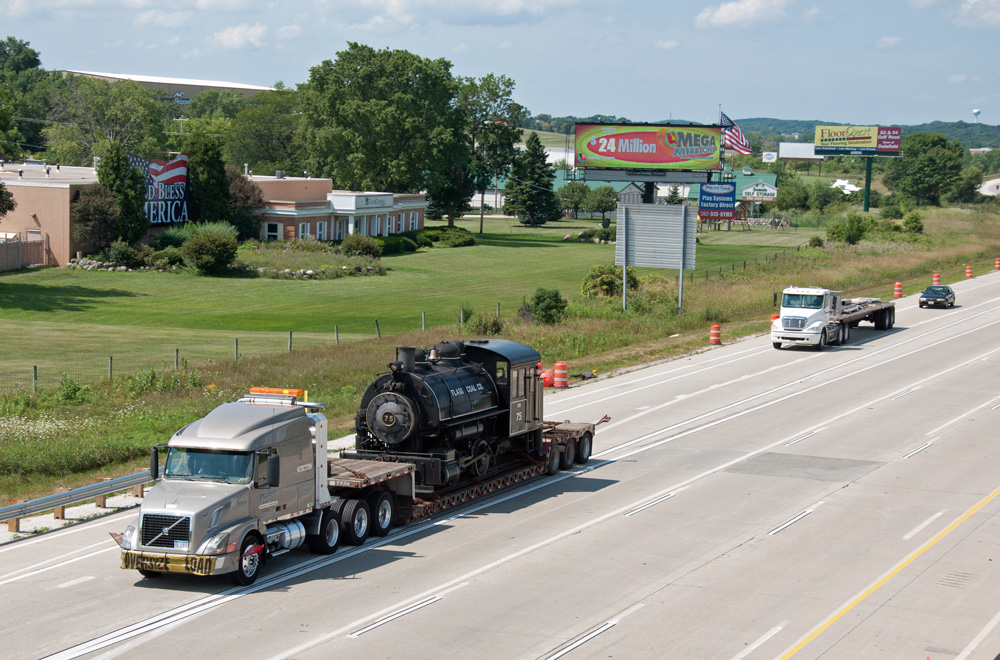
Motorists on I-94 must have done a double-take when this flatbed truck carrying Flagg Coal Co. No. 75 came rolling past on August 16, 2011. The 0-4-0 tank engine built in 1930 was headed to its home in Indiana after a weekend of operations on the Mid-Continent Railway Museum in North Freedom, Wis. Photo by […]
Read More…
FULL SCREEN John Gruber Graham Claytor Jr. (left) appears apprehensive as he talks with D. W. Brosnan and Walter Dove on the platform at Asheville, N.C. But the conversation was friendly and the 4501 soon was on its way. FULL SCREEN John Gruber Locomotive 4501 proudly poses at Terminal Station, about ready to leave on […]
Read More…
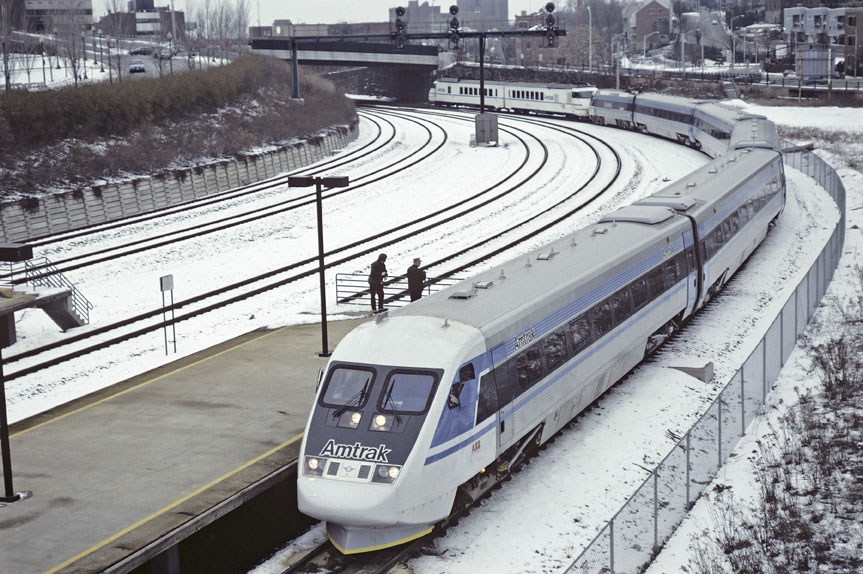
As a prelude to today’s high speed Acela Express service, Amtrak tested two types of European high speed trains, a German ICE trainset and this tilting X2000 train from Sweden. The demonstration equipment made revenue runs on the Northeast Corridor and toured other parts of the country. Pushed by two Amtrak Tubroliner power cars, the […]
Read More…
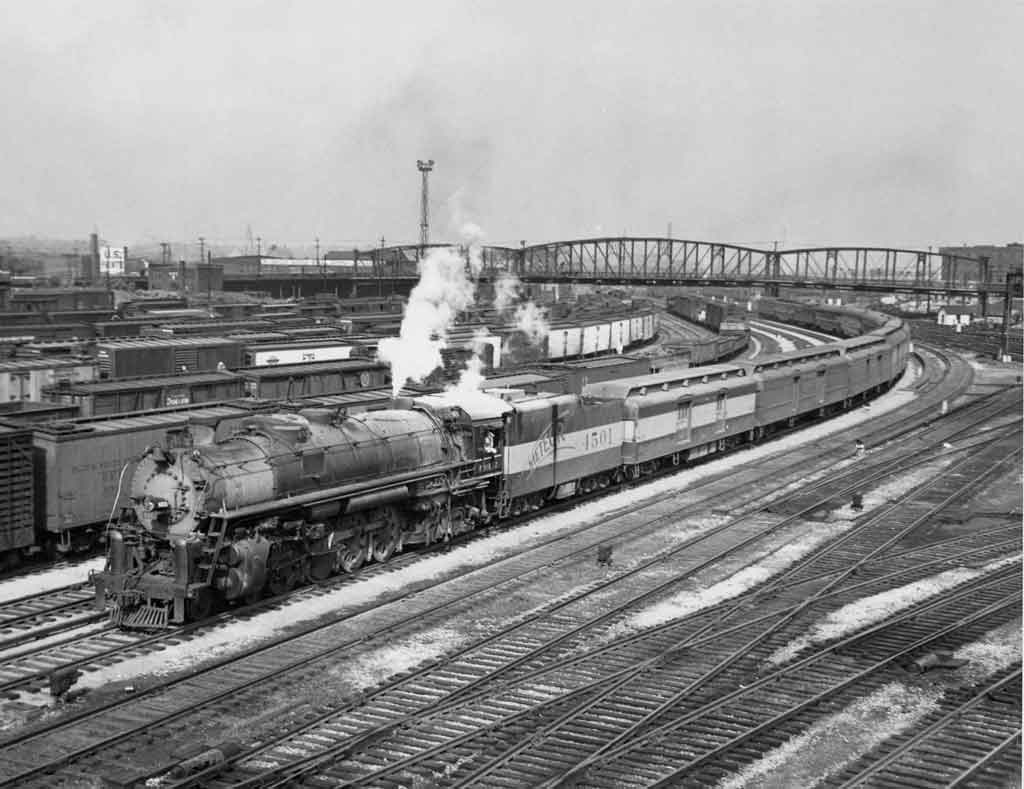
Frisco 4501, one of the road’s three 4500-series 4-8-4s assigned to passenger service, rolls the Meteor into St. Louis. Ben F. Cutler About midnight on a Saturday in 1944 on the station platform in Neosho, Mo., are 500 guys with suntans, each carrying a one-day pass and probably a railway ticket tucked in his wallet. […]
Read More…
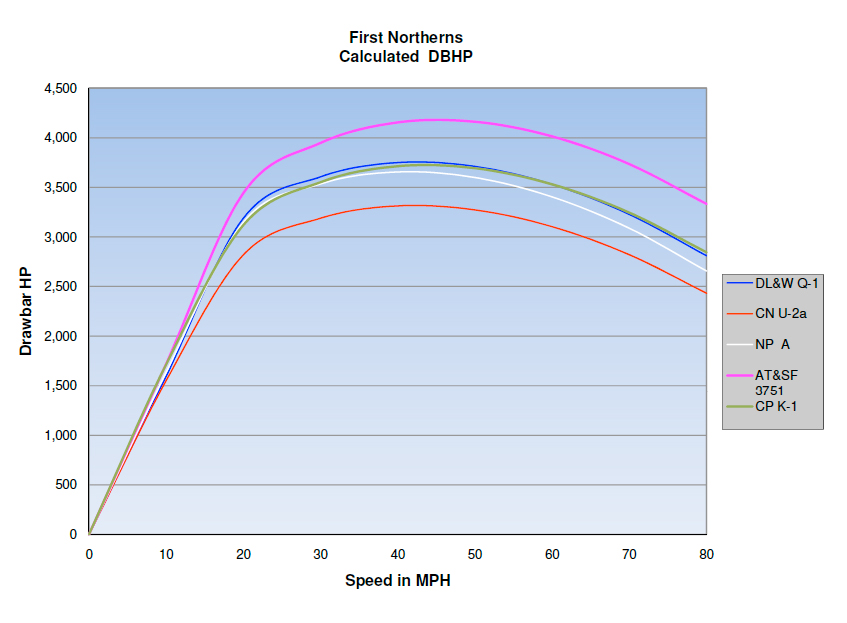
This graph shows the calculated drawbar horsepower curves for five classes in the first wave of 4-8-4s: Lackawanna Q-1, Canadian National U-2-a, Northern Pacific A, Santa Fe 3751, and Canadian Pacific K-1. Neil Carlson In the days of steam it was a normal practice to estimate the horsepower potential of a locomotive. Baldwin Locomotive Works […]
Read More…
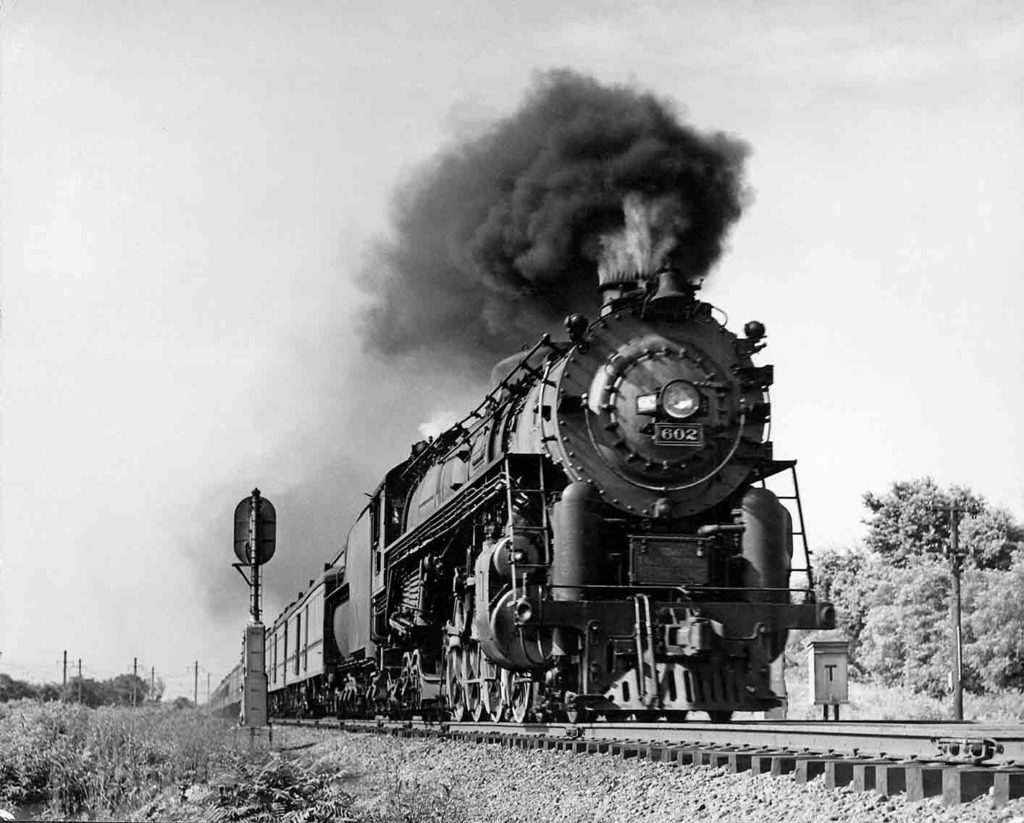
Richmond, Fredericksburg & Potomac 4-8-4 No. 602, named Governor Thomas Jefferson, rushes an 18-car passenger train toward Washington, D.C., near Four Mile Run, Va., in June 1940. C. W. Whitbeck Back pressure Back pressure is caused by the resistance of the exhaust steam exiting the cylinders. Overcoming this resistance represents negative work done by the […]
Read More…
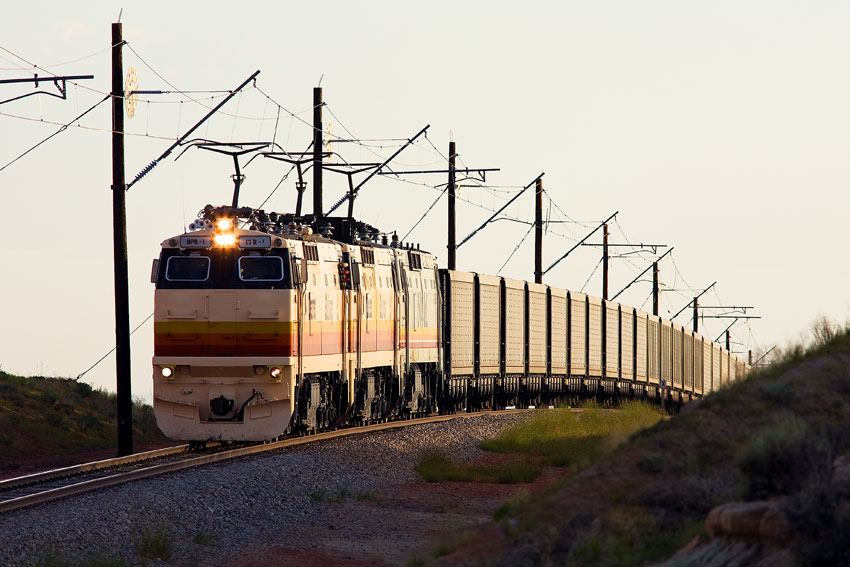
Three Deseret Power Railway E60Cs begin the short but steep 2-percent descent into Coyote Basin near Bonanza, Utah, on July 8, 2009. David Honan Q How do you figure out the percent of the grade of a railroad track?— Richard Buckhold, Kirkwood, Mo. A Grades are expressed as the rise in feet per 100 feet […]
Read More…
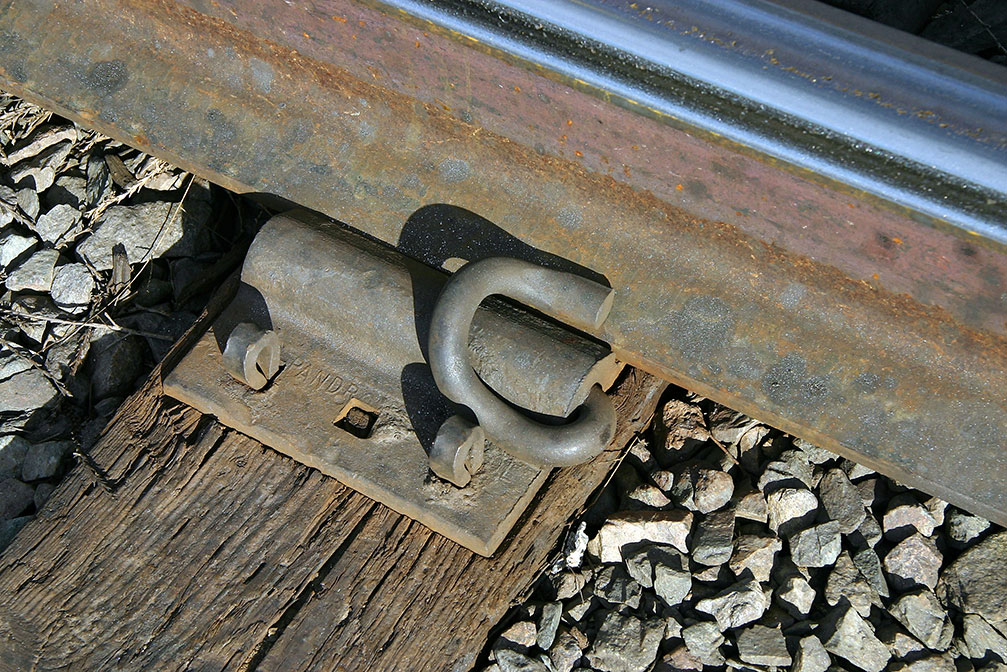
A Pandrol e-clip elastic rail fastener secures the rail to the tie, along with a type of hairpin spike. TRAINS: Kathi Kube Q How do Pandrol clips secure rails to concrete or wooden ties?— John Trifari, Sunnyvale, Calif. A The clips are made of spring steel and must be pressed into position by machinery or […]
Read More…










